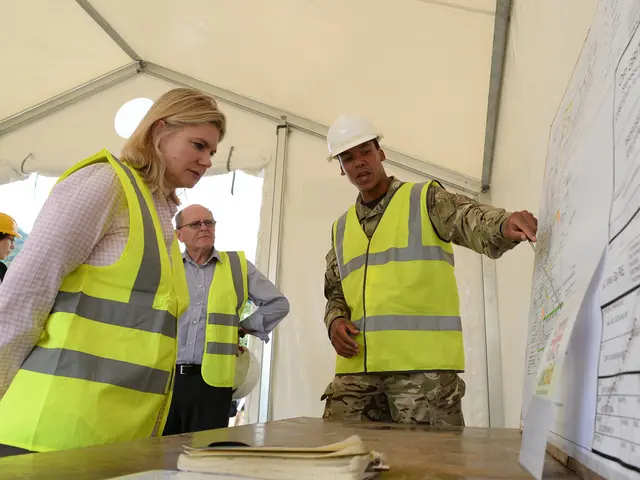civilian shelters: their time has passed
Fortified Structures Have Proven Useful in Various Scenarios - Underground shelters are obsolete
Shelters have served their purpose in domestic defense. The Hessian Interior Ministry reports that there are 15 public shelters in Hesse with a capacity for 33,000 people. These shelters in the cities of Darmstadt, Frankfurt, Kassel, Offenbach, and Wiesbaden, along with districts Bergstraße and Fulda, were once meant for civilian defense.
According to reports from Wiesbaden, the federal government is responsible for the operational readiness of these public shelters. However, reactivation measures are required before they can be used again.
In 2006, Germany decided to gradually phase out the use of existing public shelters and repurpose them. The comprehensive provision of public bunkers for defensive purposes is no longer a part of the civil defense concept.
Times have changed
The Federal Office for Civil Protection and Disaster Assistance (BBK) acknowledges the change in times: "For a long time, the construction and maintenance of public shelters were perceived as the central measure of civil defense." However, even during the Cold War, only a maximum of two percent of the population could find refuge in public shelters.
The threat scenarios then and now are not comparable. "Given this background, new approaches to protecting the population must be pursued. A comprehensive construction of shelters is therefore not a contemporary approach to ensuring effective protection of the population."
Since the Russian attack on Ukraine, "the threat situation for all European states has permanently changed," said Hessian Interior Minister Roman Poseck (CDU) to dpa. This means new challenges for civil protection in Hesse. Everyone can contribute to the crisis resilience of the community by maintaining a suitable supply of food and drinks, a flashlight, batteries, and a battery-operated radio, for example.
Behind the scenes:
Currently, Germany's approach to civil defense is evolving alongside broader shifts in its strategic posture and defense policies. Here are some key developments:
shifting defense posture:
- militarization and modernization: Germany is moving towards a more assertive defense posture, driven by concerns over global security threats, such as Russian aggression and China's influence. This includes significant investments in military modernization, which might indirectly enhance civil defense capabilities through improved preparedness and infrastructure[2][4].
- financial commitments: The German government has amended its debt brake to allow for increased defense spending beyond 1% of GDP. This financial flexibility could potentially be used to enhance civil defense measures, though the primary focus is on military modernization[1][2].
modernizing civil defense:
- Public Bunkers: While public bunkers were once a cornerstone of civil defense, there is a shift towards more modern and integrated emergency preparedness systems. This includes leveraging advanced technologies for crisis management and emergency response[3].
- Integrating with European Security Initiatives: Germany is part of broader European Union efforts to enhance security and defense capabilities. Initiatives like the "ReArm Europe" program highlight the integration of national defense strategies within a European framework. While these programs focus more on military capabilities, they also underscore the importance of robust civil defense through strategic cooperation and resource sharing[5].
peacebuilding and multidimensional security:
- Linking Defense to Peacebuilding: Reports from leading peace research institutes emphasize the need for a holistic approach to security, integrating military defense with long-term peacebuilding strategies. This approach suggests that civil defense should be part of a broader framework that considers social, economic, and political factors in maintaining security[3].
In summary, while there is no mention of replacing public bunkers with alternative civil defense measures in the sources, Germany's current approach involves modernizing its defense capabilities and integrating into European security frameworks. This might include enhancing civil defense through advanced technologies and strategic planning. However, the primary focus remains on military modernization and peacebuilding strategies.
- In light of the changing threat landscape, vocational training programs for community members in health-and-wellness, science, industry, finance, and medical-conditions could prove invaluable, equipping them with the necessary skills to respond effectively during crises.
- As Germany modernizes its civil defense, it's crucial to integrate advanced technologies for crisis management and emergency response, thereby improving the overall readiness and resilience of the community.
- The evolving defense posture is not only about militarization and financial commitments; it also involves recommitting to a holistic approach to security that incorporates long-term peacebuilding strategies and robust civil defense measures within a European security framework.








